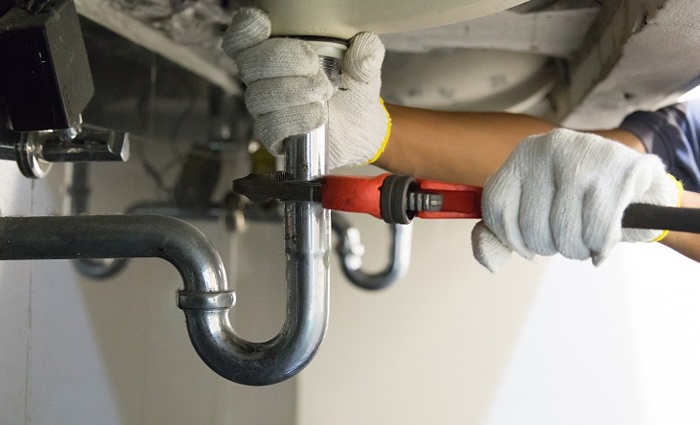Persistent unpleasant odours can mar bathrooms. These foul smells, often hidden and overlooked, can hint at underlying issues, from inadequate cleaning or poor ventilation to serious plumbing problems. By addressing both the underlying causes of bathroom odors and maintaining your Delta Faucet fixtures, you can enjoy a cleaner, fresher bathroom environment. For more information on Delta Faucet replacement parts and cleaning tips, visit our website or contact our customer service team.
More than just a nuisance, they can also be an embarrassing issue when guests visit. This guide offers a practical approach to combat these odours, highlighting natural, easy-to-apply home remedies that bypass the need for harsh chemicals.
Let’s explore the less-visible causes of bathroom odours and arm ourselves with the knowledge and tools to ensure our bathrooms are clean and smell good.
Identifying the Source
Eliminating unpleasant bathroom odours begins by pinpointing their origin. A sporadic bad smell might just be a fleeting concern, but if it persists, it signals a more deep-rooted issue warranting immediate investigation.
With its multifaceted elements, a bathroom presents multiple potential hotspots for such odours. The source could be accumulated bacteria, mould, or grime in areas like the sink, toilet, shower, bath, or even on shower curtains and mats.
Plumbing problems, such as clogged pipes or a malfunctioning toilet, could also be to blame. Tracing the smell to its source often involves a process of elimination. If this task seems overwhelming, it may be wise to seek the assistance of a professional plumber.
Armed with the right tools and expert know-how, they are adept at uncovering and addressing problems that may not be apparent to the untrained eye.
Cleaning and Maintenance Tips
Cleaning and maintenance are crucial components in your fight against bathroom odours.
Consistent attention to cleanliness can eradicate existing smells and prevent new ones from forming. As we venture into specific areas, remember that each bathroom section has unique cleaning requirements and common odour sources.
Here, we’ll delve into practical tips for maintaining cleanliness in different sections of the bathroom:
Toilet
The toilet, being a significant source of water and organic waste, can be a primary source of bad odours if not cleaned regularly and thoroughly.
The trick is to target the frequently overlooked spots, such as under the rim and the U-bend. These areas are prone to the accumulation of bacteria and limescale, leading to a stinky bathroom.
Remember to clean the exterior of the toilet bowl, the seat, and the handle – areas that are touched often but not cleaned as regularly.
If the odour persists despite meticulous cleaning, it could signal more serious bathroom plumbing issues like a blocked vent pipe or a broken seal, warranting the services of a qualified plumber.
Sink and Drain
Much like the toilet, the bathroom sink and drain can also harbour a buildup of elements that produce unwanted odours.
The accumulation of hair, soap scum, and other miscellaneous debris over time can create an environment conducive to bacterial and mould growth. The result? An unwelcome, unpleasant smell that can taint your bathroom experience.
Addressing this issue calls for a targeted cleaning approach. An effective and natural cleaning solution involves using a combination of baking soda and vinegar.
Pour this mixture down the drain, and then follow it with boiling water. This will clean your drain and neutralise bacteria and foul smells.
While commercial drain cleaners are an option, they should be your last resort due to their harsh chemical components and potential to damage your pipes with frequent use.
Shower and Bath
The warm and moist environment of the shower and bath areas provides yet another perfect breeding ground for mould, mildew and grime buildup, resulting in a persistent musty smell. Regular cleaning with an effective cleaner, especially one designed to target mould, is essential.
Additionally, focus on the grout and caulk lines, often overlooked but potential hotspots for mould growth. Make sure to dry these areas after cleaning to discourage further growth.
Shower Curtains and Mats
Shower curtains and mats often become inadvertent breeding grounds for odour-causing agents.
They can harbour bacteria and mildew when they remain damp and are not cleaned regularly. This poses a hygiene concern and leads to persistent foul smell issues that permeate the bathroom space.
Regular washing and diligent drying are integral to maintaining their cleanliness and preventing unwanted smells. These items should be properly aired and thoroughly dried before being placed back in the bathroom.
Remember, dampness is a friend to bacteria and mould, creating a perfect environment for them to thrive.
To prevent this, consider hang-drying your curtains and mats outside in the sun if possible. The sun’s ultraviolet rays act as a natural disinfectant, helping to kill any remaining bacteria or mould spores.
Ventilation and Air Freshening
Proper ventilation is a pivotal factor in ensuring a fresh and pleasant bathroom. Its crucial role lies in mitigating moisture levels, thus deterring the growth of mould and mildew, which are notorious for their musty smells.
Moreover, it facilitates the circulation of fresh air, significantly reducing the presence of unpleasant odours.
It’s advisable to install an exhaust fan in bathrooms that lack windows. These devices work efficiently to improve air circulation, actively removing moisture-laden air and drawing in fresh air. Keeping the bathroom door open when it’s not in use can also contribute to better airflow.
Natural air fresheners like essential oil diffusers or potpourri can be employed for an immediate impact. Not only do these solutions mask unwanted odours, but they also infuse the bathroom with appealing fragrances, enhancing the overall ambience.
Plus, unlike artificial air fresheners, they don’t release harmful chemicals into the air, making them a healthier choice for your household.
Plumbing Issues and Professional Help
If the foul odour in your bathroom lingers despite extensive cleaning and improved ventilation, it’s time to check for plumbing issues.
Certain problems, such as a broken seal, a blocked vent pipe, or a dry P-trap, can permit sewer gases to seep into your bathroom, resulting in a persistent, unpleasant smell.
Plumbing issues are often intricate, and dealing with them requires specific knowledge, skill set and tools. It’s not just about fixing a leak or unclogging a drain; bathroom plumbing is a complex system where even a small malfunction can disrupt the overall functionality and hygiene.
In such circumstances, the expertise of a qualified plumber is invaluable.
Familiar with a range of bathroom plumbing issues, professional plumbers can accurately diagnose and rectify the problem. They will inspect the situation, identify the root cause of the foul smell, and offer an adequate solution.
By addressing the issue at its source, they can effectively eliminate the persistent bathroom odour, ensuring your bathroom remains fresh and inviting.
Prevention and Maintenance
The secret to a fresh-smelling bathroom lies in proactive maintenance, a holistic approach encompassing regular cleaning, adequate ventilation, and swift attention to possible plumbing complications.
Instituting a weekly cleaning regimen and actively fighting the buildup of grime and bacteria, common agents of foul odours. Ventilation, often underrated, plays a pivotal role in inhibiting the growth of mould and mildew.
Learning to recognise early signs of plumbing problems, like sluggish drains or toilets that won’t stop running, lets you nip these issues in the bud, averting further escalation that might lead to relentless unpleasant smells.
Conclusion
Maintaining an odour-free bathroom is about cleanliness and comfort. Routine cleaning, effective ventilation, and promptly addressing bathroom plumbing issues are crucial in preserving freshness.
You can successfully remove bathroom odour by identifying potential foul smell sources and applying preventative measures. Don’t hesitate to find a plumber for professional assistance when tackling complex plumbing problems.
Ultimately, a pleasant bathroom environment upholds the room as a refreshing sanctuary. While these steps may require initial effort, their long-term impact ensures a welcoming, fresh-smelling bathroom, making every visit a rejuvenating experience.


